#2020 Ford Edge Design
Explore tagged Tumblr posts
Text
From Classic to Electric: The Transformation of Iconic Car Models
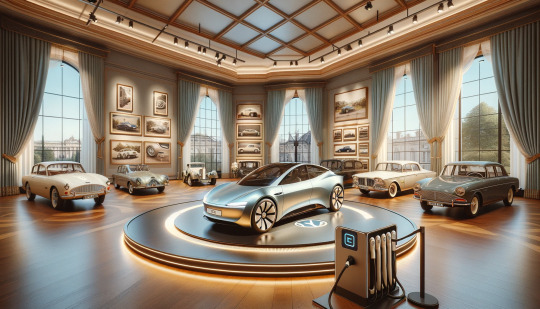
Electric Revolution in the Automotive Industry
The automotive industry is undergoing a monumental shift, transitioning from the roar of gasoline engines to the hum of electric motors. This transformation is not just about the emergence of new electric vehicle (EV) brands, but also about the electrification of some of the world's most iconic car models. This transition to electric power is driven by a combination of environmental concerns, advancements in battery technology, and changing consumer preferences. The journey from classic internal combustion engines to electric powertrains has been both challenging and exciting, reshaping the automotive landscape as we know it.
The Resurgence of the Volkswagen Beetle
One of the most beloved car models in history, the Volkswagen Beetle, has made a comeback in an electric avatar. Originally launched in the 1930s, the Beetle became a symbol of simplicity and reliability. In recent years, Volkswagen announced plans to revive the Beetle as an electric car, part of its broader strategy to introduce more electric models. This new electric Beetle aims to combine nostalgia with modern EV technology, appealing to both classic Beetle lovers and new-age environmentalists. While retaining its iconic shape, the electric Beetle is expected to feature advanced technology like fast charging and a substantial range, catering to the needs of today's EV market.
The Electric Transition of the Ford Mustang
The Ford Mustang, an emblem of American muscle cars, has also embraced electrification. The Mustang Mach-E, an all-electric crossover, marks a significant departure from the classic Mustang's V8 engine tradition. Launched in 2020, the Mach-E combines the Mustang's legendary performance with the benefits of electric propulsion. It offers a range of up to 300 miles on a single charge and accelerates from 0 to 60 mph in just 3.5 seconds. The Mach-E has been well-received, signifying a successful blend of an iconic legacy with futuristic technology.
MINI Cooper's Electric Makeover
The MINI Cooper, known for its distinctive design and agile handling, has also joined the electric wave. The launch of the MINI Electric brings a new dimension to this British icon, maintaining its classic aesthetics while integrating cutting-edge EV technology. With a range of around 145 miles per charge and a 0 to 60 mph time of around 7 seconds, the MINI Electric retains the brand's fun-to-drive character. This transition reflects the brand's commitment to sustainability while preserving the essence that has made the MINI a popular choice for decades.
Porsche's Electrification with the Taycan
Porsche, synonymous with high-performance sports cars, has made a bold entry into the EV market with the Taycan. The Taycan is not just Porsche's first fully electric car but also a powerful statement in the luxury EV segment. With its exceptional performance, delivering up to 750 horsepower in the Turbo S model, and a range of up to 227 miles, the Taycan has set new standards for electric sports cars. It represents how traditional sports car manufacturers are adapting to the electric era without compromising on performance and luxury.
The Transition of Supercars to Electric Power
The shift to electric is not limited to mass-market models; even supercars are getting electric makeovers. Brands like Ferrari and Lamborghini, known for their powerful engines and exhilarating performance, are exploring electric and hybrid models. The move towards electrification in supercars is particularly significant, as it challenges the traditional notion that electric vehicles can't match the performance of gasoline-powered sports cars. This transition is a testament to the advancements in EV technology, where electric motors can deliver instant torque and unmatched acceleration.
Challenges and Future Prospects
Despite the excitement, the transition from classic to electric models poses significant challenges. These include maintaining brand identity, meeting consumer expectations for performance and range, and managing the higher production costs of EVs. However, the future looks promising as battery technology continues to improve, charging infrastructure expands, and public acceptance of EVs grows. The transformation of these iconic car models into electric versions is not just a trend but a glimpse into the future of transportation, where sustainability meets style and performance.
5 notes
·
View notes
Text
Raiders of the Lost Ark (1981)

When you put the finishing touches on a film, you always hope it will be a hit but few must know for sure how the public will react to their hard work. When Steven Spielberg wrapped production on Raiders of the Lost Ark you wonder if he knew. Packed with wall-to-wall excitement, unforgettable characters, one memorable scene after another, deliciously evil villains, a romance that draws you in and a protagonist so cool it’ll make you want to become an archeologist so you can imitate him, this is the kind of movie that reminds you why you love movies.
In 1936, American archaeologist Indiana Jones (Harrison Ford) is sent to investigate a dig funded by the Nazis. Rumor is Indy’s old mentor discovered the location of the Ark of the Covenant, that whoever possesses it will be granted invincibility and that the last clue to its location is in the headpiece of a staff Abner Ravenwood left to his daughter, Marion (Karen Allen).
You can simply sit back and enjoy the show but if you’ve got an eye for filmmaking, Raiders of the Lost Ark takes you through a masterclass. The opening scene is a dazzler. The way it sets up Indiana Jones, it’s like they designed the character to be recognizable from his silhouette alone - guaranteeing his iconic status. As our hero, Harrison Ford practically embodies the definition of manliness. He’s crafty and methodical. He’s always got a snappy remark to ensure his opponents are dumfounded even before he throws a first punch. When he encounters an opponent stronger than he is, his well-oiled brains make up the difference. The chemistry between our favorite archeologist and the beautiful Marion (who winds up kidnapped and captured more than a couple of times but is otherwise tough and resourceful) is unmissable. You want them to get together almost as much as you want them to find that mysterious Ark.
When you look at the whole picture, there’s nothing grandiose about the characters and their relationships. The sadistic Major Arnold Toht (the wonderfully slimy Ronald Lacey) is evil through-and-through. He has no redeeming qualities whatsoever except that he excels at making you intimidated. The film has a tiny bit of something to say about the value of archaeological finds in that Indy’s rival, Dr. René Belloq (Paul Freeman) sees every ancient trinket as an object that randomly happens to be valuable, whereas our hero sees the non-monetary value they will earn from future generations. What makes it so special, then? It's the emotions the story stirs within you. Even if you've never sat through the Saturday morning serials Philip Kaufman, George Lucas, Lawrence Kasdan and Steven Spielberg saw as children, you immediately understand what made them special because this is essentially one of those blown up and made by fine artists. Every cliffhanger has you on edge, wondering what’s next. As soon as our heroes make it out of one jam, you get a bit of a breather to laugh… but then you’re thrown right back into the thick of it with another spike pit or goon looking to cause trouble. Every frame of Raiders of the Lost Ark fulfills the kind of childhood desire that guarantees you leave satisfied.
You could watch Raiders of the Lost Ark 100 times and always find something new in it. From the characters to the action and the romance, there's too much to drink in for just one sitting. It's no wonder we're still talking about it today. (On Blu-ray, April 10, 2020)

#raiders of the lost ark#indiana jones#steven spielberg#lawrence kasdan#harrison ford#karen allen#paul freeman#ronal lazey#john rhys-davies#denholm elliott#movies#films#movie reviews#film reviews#1981 movies#1981 films
4 notes
·
View notes
Text
Voters Demand Policy Shift: Prioritize Fossil Energy Production

Source: thehill.com
Category: News
A Call for Change in Energy Policy
The recent election sent a clear message from voters: remove the barriers hindering fossil energy production, particularly American oil and natural gas. This sentiment reflects the economic advantages associated with efficient fossil energy production, which bolsters employment and economic productivity nationwide. Battleground states such as Pennsylvania and Michigan highlighted this shift in priorities, where energy policy played a decisive role in shaping electoral outcomes.
Pennsylvania, the second-largest natural gas producer after Texas, showcased voter dissatisfaction with current federal energy policies. The Biden administration’s resistance to expanding natural gas exports, paired with Vice President Harris’ unconvincing reversal on her fracking stance, raised concerns. Pennsylvanians feared regulatory pressures could severely constrain domestic energy production, including pauses on new liquefied natural gas (LNG) export projects. Energy Secretary Jennifer Granholm’s announcement of an upcoming Department of Energy study on LNG exports further fueled apprehensions, as such reviews could reopen approvals granted by the Trump administration, delaying progress.
Federal Leasing and Energy Security
Federal policy changes have significantly impacted fossil energy production, particularly oil and gas. Leases for exploration on federal lands dropped from 1,841 in 2019 to just 144 in 2023 under the Biden administration. Industry leaders believe an incoming Trump administration could reverse this trend by increasing leasing, potentially boosting production after a few years.
Energy security also emerged as a crucial issue. Expanding U.S. LNG exports positions the nation as a stable competitor to natural gas producers in Russia and the Middle East. These regions, known for political instability and unreliable delivery, underscore the strategic advantage of U.S. exports. Critics argue that suppressing new LNG projects undermines this competitive edge, benefiting adversarial producers without yielding meaningful gains for Americans. These concerns likely contributed to Republican victories in Pennsylvania, including Donald Trump reclaiming the state after losing it in 2020 and Dave McCormick narrowly defeating longtime Senator Bob Casey.
Economic Consequences in Michigan
Michigan, the epicenter of U.S. automobile production, illustrated voter discontent with the Biden administration’s regulatory push toward electric vehicles (EVs). Critics view the EV mandate as central planning at the expense of market-driven solutions, resulting in significant financial losses for automakers like GM, Ford, and Stellantis. Thousands of skilled workers face potential layoffs, while related industries, including designers, engineers, and toolmakers, endure ripple effects.
Vice President Harris’ failure to clarify her position on the EV mandate added to voter frustration. Polls showed strong opposition to the policy, with Blue Rose Research pollster David Schor noting that it made voters more inclined to support Republicans. Consequently, Michigan voters helped Trump secure nearly 50% of the state’s vote, reversing his 2020 loss.
The election results emphasize a broader economic narrative: promoting natural gas and traditional energy sources fuels economic growth and safeguards jobs. Conversely, policies curbing fossil energy production risk significant harm to working Americans. Lawmakers seeking reelection may find greater success by addressing these concerns and prioritizing practical energy strategies.
0 notes
Text
From Vintage to Modern: Used Engines and Transmissions for Every Vehicle
The automotive world has always been a blend of nostalgia and innovation. From classic cars that evoke memories of a bygone era to cutting-edge modern vehicles that push the limits of technology, every vehicle tells a story. But when it comes to maintaining or restoring these vehicles, the engine and transmission are at the heart of their performance. At Vander Engine, we specialize in providing top-quality used engines and transmissions for every type of vehicle, from vintage classics to modern marvels.
Why Choose Used Engines and Transmissions?
When it’s time to replace an engine or transmission, many car owners and enthusiasts are faced with a tough decision: new, rebuilt, or used? For a growing number of individuals, used engines and transmissions present the ideal balance of affordability, quality, and sustainability. Here are a few reasons why opting for used parts might be the best choice:
Cost Efficiency: Purchasing used engines and transmissions can save up to 50% compared to new or rebuilt parts, offering budget-conscious drivers a reliable alternative.
Environmental Benefits: Reusing engines and transmissions reduces the demand for new manufacturing, helping to minimize environmental impact. This contributes to a more sustainable future by recycling existing parts.
Availability of Rare Parts: For owners of vintage or classic cars, finding brand-new parts can be a challenge. Used engines and transmissions often provide access to components that are no longer in production, making them a lifeline for restoration projects.
Supporting Every Era: From Vintage Beauties to Modern Powerhouses
At Vander Engine, we understand the unique requirements of vehicles across all eras. Whether you're restoring a 1960s muscle car or keeping your 2020 SUV in top shape, we have a broad inventory to meet your needs.
Engines and Transmissions for Vintage Cars
Classic car restoration requires a delicate balance of authenticity and functionality. Whether you're bringing a vintage Ford Mustang back to life or reviving a Chevrolet Bel Air, having the right engine and transmission is critical. We offer a wide selection of used vintage engines and transmissions to help you preserve the original spirit of your car while ensuring it performs like a dream.
Modern Vehicle Solutions
For those driving newer models, replacing an engine or transmission doesn’t have to be an expensive ordeal. Our inventory includes reliable used engines and transmissions for today’s most popular vehicles, ensuring you can get back on the road without breaking the bank. From fuel-efficient compact cars to robust SUVs and trucks, Vander Engine has the parts to keep your modern vehicle running smoothly.
Quality You Can Trust
When it comes to purchasing used automotive parts, quality is key. At Vander Engine, we rigorously inspect and test every engine and transmission before it reaches our customers. Our commitment to excellence ensures that you receive parts that are in top condition, offering both durability and performance.
Nationwide Shipping, Comprehensive Support
No matter where you are in the USA, Vander Engine has you covered. We provide nationwide shipping, ensuring that your used engine or transmission arrives promptly and safely. Additionally, our customer support team is available to assist with any questions you might have regarding compatibility, installation, or maintenance.
Final Thoughts: The Perfect Fit for Your Vehicle
Whether you’re restoring a classic car or maintaining a modern one, finding the right engine or transmission is essential for longevity and performance. At Vander Engine, our extensive inventory of used engines and transmissions is designed to meet the needs of every vehicle owner, from vintage enthusiasts to modern commuters.
0 notes
Text
Electric Car Brands in USA: Leading the Charge in Innovation

Electric Car Brands in USA : Tesla, Chevrolet, and Ford are leading electric car brands in the USA. Rivian and Lucid Motors are also gaining popularity. The electric vehicle market in the USA is expanding rapidly. Tesla dominates with its high-performance models and extensive Supercharger network. Chevrolet offers affordable options like the Bolt EV, making electric cars accessible to more people. Ford's entry with the Mustang Mach-E brings a blend of tradition and innovation. Rivian focuses on adventure-ready electric trucks and SUVs, while Lucid Motors targets the luxury segment with its high-end sedans. With increasing consumer interest and government incentives, these brands are driving the shift towards sustainable transportation, making electric vehicles more mainstream and environmentally friendly.
Rise Of Electric Cars
Electric cars are taking over the roads in the USA. They are clean, quiet, and fun to drive. More people are buying electric cars every year. Historical Context Electric cars are not new. The first electric car was made in the 1800s. But gas cars became more popular. Gas was cheap and easy to get. Electric cars had small batteries and could not go far. In the 1990s, electric cars came back. The USA made new rules to protect the air. Companies started making better batteries. Electric cars started to go farther and faster. Market Growth Today, many people want electric cars. They help the planet and save money on gas. Big companies like Tesla, Ford, and Chevy make electric cars. Tesla is the most famous. They make cars that can drive a long way on one charge. Ford has the Mustang Mach-E, and Chevy has the Bolt. The number of electric cars on the road is growing fast. In 2020, there were over 1 million electric cars in the USA. This number is getting bigger every year. More charging stations are being built. Soon, it will be easy to find a place to charge your car. Brand Popular Model Tesla Model S Ford Mustang Mach-E Chevy Bolt Many new brands are coming. These cars will make our air cleaner and our world better.
Tesla: The Pioneer
Tesla is the leading electric car brand in the USA. It revolutionized the electric vehicle industry. Tesla combines innovation, performance, and sustainability. Flagship Models Tesla's flagship models set the benchmark for electric vehicles. They offer a blend of luxury, technology, and performance. Model Range (miles) Top Speed (mph) Model S 396 200 Model 3 358 162 Model X 371 155 Model Y 326 135 Autopilot Technology Tesla's Autopilot technology is a game-changer. It offers advanced driver-assistance features. - Autosteer - Traffic-Aware Cruise Control - Auto Lane Change - Summon - Autopark These features enhance safety and convenience. Autopilot uses cameras, sensors, and advanced algorithms. Tesla continues to innovate. They aim for full self-driving capabilities.
Rivian: The Adventurer
Rivian, the bold new electric vehicle (EV) brand, is revolutionizing the American automotive landscape. Known for its adventurous spirit, Rivian offers rugged, off-road capable vehicles with cutting-edge technology. Unique Offerings Rivian’s vehicles feature groundbreaking designs and technologies. The R1T truck and R1S SUV are built to explore. They offer impressive off-road capabilities and advanced safety features. Key highlights include: - Quad-Motor System: Each wheel has its own motor. - Skateboard Platform: Ensures stability and maximizes space. - Large Battery Pack: Enables long-distance travel. Sustainability Efforts Rivian is committed to a sustainable future. They use recycled and eco-friendly materials. Their manufacturing processes aim to reduce carbon footprints. Important sustainability initiatives include: Initiative Description Renewable Energy Factories powered by renewable sources. Recycling Programs Materials are recycled to minimize waste. Eco-Friendly Materials Use of sustainable and recycled materials. By focusing on these efforts, Rivian aims to lead in green automotive manufacturing.

Credit: www.autoblog.com
Lucid Motors: The Luxury Innovator
Lucid Motors stands out among electric car brands in the USA. Known for its luxury and innovation, Lucid Motors aims to redefine the electric vehicle market. Their cars are not just about performance; they focus on providing a premium experience. High-performance Vehicles Lucid Motors creates high-performance electric cars. Their flagship model, the Lucid Air, offers impressive specs. Model Range (miles) Horsepower 0-60 mph (seconds) Lucid Air 520 1080 2.5 The Lucid Air can travel up to 520 miles on a single charge. It offers 1080 horsepower, making it one of the most powerful electric cars. It accelerates from 0 to 60 mph in just 2.5 seconds. These features make it a top choice for performance enthusiasts. Interior Design The interior of Lucid Motors' cars is luxurious. They use high-quality materials and advanced technology. - Spacious cabin - Premium leather seats - Advanced infotainment system The cabin is spacious, providing comfort for all passengers. The seats are made of premium leather. The infotainment system is advanced, with a large touchscreen display. Lucid Motors focuses on offering a luxury experience from the inside out.
Ford: The Traditionalist
Ford, often seen as the traditionalist in the American auto industry, is making waves in the electric vehicle (EV) market. Known for its rich history and iconic vehicles, Ford is now blending its legacy with innovation to offer cutting-edge electric cars. Their commitment to sustainability and technological advancement is evident in their new electric models. Electric F-150 The Electric F-150, also known as the F-150 Lightning, stands out in Ford's lineup. This electric truck combines the robust features of the traditional F-150 with modern electric technology. - Range: Offers up to 300 miles on a single charge. - Towing Capacity: Can tow up to 10,000 pounds. - Power: Delivers instant torque with dual electric motors. Ford's Electric F-150 is designed for those who need power and efficiency. It retains the ruggedness of the classic F-150 while offering a cleaner alternative. Legacy And Transition Ford has a deep-rooted legacy in the auto industry. The company, founded by Henry Ford, revolutionized the manufacturing process with the assembly line. This innovation made cars affordable for the average person. Today, Ford is transitioning to a more sustainable future. They are investing heavily in electric vehicles and battery technology. The goal is to reduce carbon emissions and meet the growing demand for clean energy solutions. Here is a table summarizing Ford's transition to electric vehicles: Year Milestone Impact 2021 Launch of F-150 Lightning First all-electric truck 2022 Expansion of EV lineup Increased EV market share 2025 Goal for 40% EV sales Significant shift to electric Ford's journey from traditional cars to electric vehicles is remarkable. This transition ensures they remain relevant and competitive in the evolving automotive landscape.
Chevrolet: The All-rounder
Chevrolet has become a significant player in the electric car market in the USA. Known for its reliable and affordable electric vehicles, Chevrolet offers something for everyone. The brand combines innovation with practicality, making it a top choice for many consumers. Below, we'll explore one of its standout models. Bolt Ev The Chevrolet Bolt EV is a star in the electric car world. It’s designed for those who seek efficiency without breaking the bank. The Bolt EV offers a smooth ride, advanced tech features, and impressive performance. Affordability And Range The Bolt EV stands out due to its affordability and range. It's one of the most cost-effective electric cars available today. Feature Details Starting Price Under $40,000 Range 259 miles per charge With a price tag under $40,000, the Bolt EV is accessible. It offers an impressive range of 259 miles per charge. This makes it perfect for daily commutes and longer trips. Key features include: - Fast Charging: Charge up to 100 miles in 30 minutes. - Spacious Interior: Plenty of room for passengers and cargo. - Advanced Safety Features: Equipped with the latest safety tech. The Bolt EV combines affordability with excellent range and features. This makes it a smart choice for budget-conscious drivers. Chevrolet continues to lead the electric vehicle market with its reliable and innovative cars.
Future Trends
The future of electric car brands in the USA looks very bright. Innovations in battery technology and charging infrastructure are paving the way for a cleaner, more efficient future. Battery Technology Electric cars need powerful batteries. Battery technology is improving rapidly. New batteries can store more energy. They last longer and charge faster. Companies are working on solid-state batteries. These batteries are safer and have a higher energy density. This means electric cars can travel further on a single charge. Another exciting trend is recycling old batteries. This helps reduce waste and lower costs. It's good for the environment too. Charging Infrastructure Charging infrastructure is also evolving quickly. More charging stations are being built across the USA. This makes it easier for people to charge their electric cars. Fast chargers are becoming more common. These chargers can fill up a battery in minutes instead of hours. It makes electric cars more convenient for long trips. Smart charging stations are another trend. They use advanced tech to optimize charging times. This helps balance the power grid and save energy. Trend Benefit Solid-state Batteries Safer, higher energy density Battery Recycling Reduces waste, lowers costs More Charging Stations Convenient for users Fast Chargers Quick charging times Smart Charging Stations Optimize charging, save energy
Consumer Adoption
Electric cars are gaining popularity in the USA. Many people are choosing electric vehicles (EVs) over traditional gas cars. This shift is due to several factors. Let's explore these factors in detail. Incentives And Rebates The US government offers many incentives and rebates for EV buyers. These financial perks can make electric cars more affordable. Some common incentives include: - Federal tax credits - State-specific rebates - Utility company discounts Federal tax credits can save buyers up to $7,500. State rebates vary but can offer additional savings. Some utility companies also provide discounts for EV charging stations. A table of incentives by state can help: State Incentive Type Amount California Rebate $2,500 New York Rebate $2,000 Texas Rebate $2,500 Public Perception Public perception plays a big role in consumer adoption. People need to trust that EVs are reliable and cost-effective. Some key points affecting public perception: - Environmental benefits - Lower running costs - Advanced technology Many people believe EVs help the environment. They produce fewer emissions than gas cars. Electric cars also have lower running costs. They require less maintenance and offer cheaper fuel options. Finally, EVs often feature advanced technology. This includes autonomous driving features and smart connectivity.

Credit: www.cnn.com
Frequently Asked Questions
What Companies Are Making Electric Cars In The Us? Tesla, General Motors, Ford, Rivian, and Lucid Motors are making electric cars in the US. These companies lead the EV market. Which Company's Electric Car Is Best? Tesla's electric cars are often considered the best. They offer superior range, performance, and advanced technology. How Many Brands Of Electric Cars Are There? There are over 50 brands of electric cars globally. Major brands include Tesla, Nissan, BMW, and Chevrolet. What Is The Most Sold Electric Car In The Us? The Tesla Model 3 is the most sold electric car in the US. It's popular for its range, performance, and affordability.
Conclusion
Electric car brands in the USA are revolutionizing the automotive industry. They offer sustainable and efficient transportation options. With a variety of choices, consumers can find the perfect electric vehicle. Embrace the future of driving by exploring these innovative brands. The shift to electric cars is here to stay. Read the full article
0 notes
Text
Navigating the Digital Cosmos: Exploring the Friendliness of Online Fandom Spaces for Asian Fans

In the ever-evolving landscape of digital communities, fandoms have emerged as dynamic spaces that transcend geographic boundaries, uniting individuals in shared passion and creativity. As we delve into the intricacies of online fandom, particularly for Asian fans, it becomes imperative to unravel how our social experiences are intertwined with social media platforms and the unique affordances they offer. Through this exploration, we will navigate the multifaceted nature of online fandom, considering both its friendly and toxic facets, with a focus on Asian fan communities.
Defining Fandom: More Than a Mere Obsession
Fandom, as Henry Jenkins posits, functions as an "alternative social community." It goes beyond the stereotypical portrayal of fans as mere consumers, delving into the realms of social belonging, community, and even activism. Understanding fandom requires acknowledging its diverse manifestations, extending far beyond the realms of K-pop or anime, encompassing various texts and content.
Fans, often dismissed as weird or obsessed, are, in reality, engaged participants in communal activities. Media studies, evolving from the recognition of audiences, now scrutinizes the practices of dedicated and loyal fan communities, highlighting the significance of understanding fan behaviors in the context of the creative industry and brand loyalty (Jenkins, 1992; Hills, 2002).

Fandom as a Participatory Culture: A Shift in Paradigm
Jenkins' work on fandom has transitioned from viewing fans as mere consumers to recognizing them as active participants in a participatory culture (Convergence Culture, 2006). This shift has been facilitated by changing media landscapes, multiple streaming services, and transmedia storytelling. Fans are now integral to the media landscape, with media industries designing products that invite fan participation.
The rise of participatory culture has made TV and films more fan-friendly, evident in phenomena like the Marvel Cinematic Universe (MCU). Social media, including platforms like Tumblr, Instagram, and TikTok, has played a pivotal role in enabling fans to engage in communal spaces both online and offline. Participatory culture not only invites fans into the narrative but also empowers them to amass massive support, as seen in the fervor of K-pop fandoms.
Case Study: Thai Fandom on Twitter
To delve deeper into the dynamics of online fandom for Asian fans, let's turn our attention to a case study on Thai fandom (Smutradontri & Gadavanij, 2020). This study explores how Thai fans engage with fan text on Twitter, emphasizing the creation of fan text as a way of demonstrating dedication and passion. The analysis reveals five types of fan tweets, including hypothetical interpretation, fan art, narratives concerning source texts, expressions of personal opinions and feelings, and fan parody.
Notably, this study sheds light on the creation of a shared lexicon, termed 'fan talk,' and how fans position themselves as relatives and friends of the source texts. The study also highlights the humorous nature and transcultural elements found in fan tweets, especially the 'Thai-ifize' method used by fans.
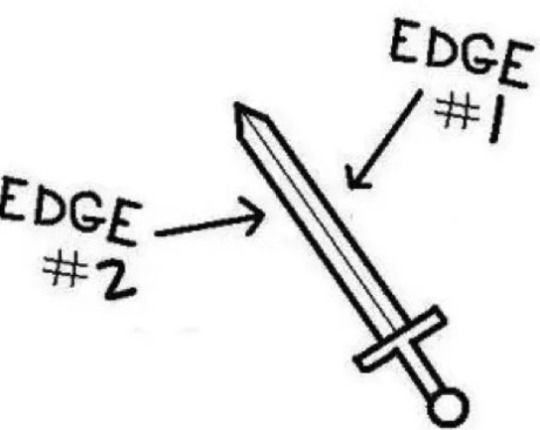
Media Affordances: A Double-Edged Sword
The digital era has bestowed fans with the power to form communities online based on shared interests, giving rise to a myriad of opportunities. Social media platforms, such as Tumblr and Twitter, offer spaces for fandom expression and even social and political activism. However, the same platforms can also be breeding grounds for toxicity, exemplified by instances in K-pop and C-pop fandoms.
The phenomenon of 'spreadable media,' as described by Jenkins, Ford, and Green (2013), underscores the ability of fans to easily share content. Fan voices, when part of a collective, become powerful tools for raising awareness, as seen in campaigns against issues like whitewashing. Nevertheless, this participatory nature can also be exploited for free labor, raising questions about the ethics of such engagement.
Conclusion: Navigating the Cosmos
In conclusion, the exploration of online fandom for Asian fans unveils a complex tapestry of social experiences, woven through the affordances of social media platforms. The case study on Thai fandom illuminates the positive aspects of fan engagement, from the creation of diverse fan texts to the formation of a shared lexicon. However, the darker side, characterized by toxic fandom and the potential for online spaces to breed toxicity, cannot be ignored.
As we navigate the digital cosmos of online fandom, it becomes crucial to consider the ethical implications of fan engagement and the responsibility of social media platforms in fostering both friendly and safe spaces. The journey through fandom is not only a reflection of cultural passion but also a call for thoughtful examination of our roles as digital citizens in these dynamic online communities.
Hope to see you in the next one! References:
Gray, J. (2003). New audiences, new textualities: Anti-fans and non-fans. International Journal of Cultural Studies, 6, 64–81, viewed 26 November 2023.
Gray, J., Sandvoss, C., & Harrington, C. L. (2007). “Introduction” in Fandom: identities and communities in a mediated world. NYU Press, New York, pp. 1-16, viewed 26 November 2023.
Hills, M. (2002). Fan cultures. Routledge, London, viewed 26 November 2023.
Ito, M. (2008). “Introduction” in Kazys Varnelis (ed.) Networked Publics. MIT Press, Cambridge, MA., viewed 26 November 2023.
Jenkins, H. (1992). Textual poachers: Television fans & participatory culture. Routledge, New York., viewed 26 November 2023.
Jenkins, H. (2006). Convergence culture: where old and new media collide. NYU Press, New York., viewed 26 November 2023.
Jenkins, H. (2006). When fandom goes mainstream. Confessions of an Aca-Fan. , viewed 26 November 2023. <http://henryjenkins.org/blog/2006/11/when_fandom_goes_mainstream.html>
Jenkins, H., Ford, S., Green, J. (2013). Spreadable media: creating value and meaning in a networked culture. NYU Press, New York, viewed 26 November 2023.
Kresnicka, S. (2016). Why understanding fans is the new superpower (guest column). Variety, viewed 26 November 2023. <https://variety.com/2016/tv/columns/understanding-fans-superpower-troika-1201743513/>
Smutradontri, P., Gadavanij, S. (2020). Fandom and identity construction: an analysis of Thai fans’ engagement with Twitter. Humanit Soc Sci Commun 7, 177, viewed 26 November 2023. <https://doi.org/10.1057/s41599-020-00653-1>
0 notes
Text
The Iconic Design of the Ford Mustang: A Style Evolution
When it comes to American muscle cars, few have left an indelible mark on the automotive landscape quite like the Ford Mustang. Since its inception in 1964, this iconic vehicle has been synonymous with power, performance, and a style that is simply unmatched. Over the years, the Mustang has undergone several transformations, evolving both under the hood and in terms of design. In this blog, we'll take a journey through time, exploring the style evolution of the Ford Mustang, focusing on its iconic design elements and the pivotal role of Mustang parts, Mustang parts catalogs, Ford Mustang parts & accessories, and Mustang body parts in shaping its distinctive look.

The Birth of an Icon
In the early 1960s, Ford set out to create a car that would capture the spirit of the American youth. The result was the Ford Mustang, introduced in April 1964. Its design was revolutionary, boasting a long hood, short rear deck, and a sleek profile that exuded power and speed. The first-generation Mustang was an instant hit, captivating the hearts of car enthusiasts and casual drivers alike. Underneath its stylish exterior were carefully crafted Mustang parts, meticulously designed to enhance its performance and durability.
Mustang Parts: The Building Blocks of Style
One of the reasons behind the Mustang's enduring popularity is the availability of high-quality Mustang parts and accessories. Mustang enthusiasts have always had a keen eye for customization, and a plethora of Mustang parts catalogs have made it easier than ever to modify and personalize their rides. From performance-enhancing components to aesthetic upgrades, these parts catalogs have played a pivotal role in shaping the Mustang's style evolution.
The Mustang's Design Language
As the years rolled on, the Mustang went through various design iterations, each building upon the legacy of its predecessor. The second-generation Mustang, introduced in 1974, showcased a more angular design, a departure from the curvy lines of its predecessor. The third generation, which debuted in 1979, embraced a more aerodynamic look, reflecting the design trends of the time.
The 1990s saw the Mustang embracing a modern, yet retro-inspired design. The fourth-generation Mustang, introduced in 1994, featured classic styling cues reminiscent of the original 1960s models. This fusion of vintage charm and contemporary design elements appealed to a wide audience, ensuring the Mustang's continued relevance in the ever-changing automotive landscape.
Ford Mustang Parts & Accessories: Fueling Innovation
The availability of Ford Mustang parts & accessories played a crucial role in this era. Enthusiasts could easily obtain Mustang body parts to restore their vehicles to their former glory or opt for performance-enhancing components to unleash the full potential of their engines. The aftermarket industry flourished, offering a wide array of options for Mustang owners to express their individuality.
Modern Elegance and Performance
In the 21st century, the Mustang underwent a significant transformation. The fifth-generation Mustang, introduced in 2005, embraced a more modern and aggressive design language. Sharp lines, bold curves, and a powerful stance defined this iteration, making it an instant favorite among car enthusiasts. Technological advancements were mirrored in the Mustang parts, with a focus on enhancing both performance and fuel efficiency.
With the sixth and seventh generations, introduced in 2015 and 2020 respectively, the Mustang continued to evolve. The design became more streamlined, with a focus on aerodynamics and efficiency. LED lighting, advanced infotainment systems, and driver-assist technologies became standard features, showcasing the Mustang's ability to blend iconic design with cutting-edge innovation.
Mustang: A Timeless Classic
As we look back at the Mustang's style evolution, it's evident that the careful selection and integration of Mustang parts, as well as the availability of Mustang parts catalogs and Ford Mustang parts & accessories, have played a pivotal role in shaping its iconic design. From its inception in the 1960s to its modern iterations, the Mustang has stood the test of time, captivating generation after generation with its powerful performance and timeless elegance.
In conclusion, the Ford Mustang's journey from a revolutionary concept to a timeless classic is a testament to the importance of innovative design and high-quality parts. As automotive technology continues to advance, one can only imagine what the future holds for this beloved American muscle car. Whatever the next chapter may bring, one thing is certain: the spirit of the Mustang will always be defined by its iconic design and the passion of its enthusiasts.
For further insights, delve into our blog, " The Most Popular Aftermarket Car Parts and Accessories on the Market. "
0 notes
Text
“Milan Fashion Week Highlights: 7 Things You Might Have Missed”

Milan Fashion Week highlights a stunning display of Milanese style. The event showcases the latest trends from top fashion designers, and Milan's unique fashion sense shines through in every outfit. From sleek and sophisticated to bold and daring, Milan Fashion Week was filled with design surprises and statements that showcased Milan-based style and beyond. Here are some of the Milan Fashion Week highlights you may have missed from the week… Baguettes at Moschino All eyes were on Moschino's new Argentinian designer, Adrian Appiolaza, during the 2024 autumn/winter show. He made his debut as the new creative director of the fashion house, and during an interview with Vogue's contributor, Luke Leitch said: "My first reaction was: volume. One of Franco's great strengths was his creation of silhouettes. I identified archetypes and obsessions. Franco's fantasy world creates characters, not just clothes. "I've already learned from him that clothing is meant to be played with. The work has irony and joy. I want to translate that into my new chapter. Appiolaza's collection had quirky oversized jumpers, trench coats, denim, and frilled maxi skirts. He chose aviator sunglasses, silk scarves, crocodile leather, yellow smiley tote bags, and unique handbags. These bags resembled baguettes, flowers, and fresh produce, all wrapped in paper grocery bags. The clutch bag debuted in 2020. Bakeries inspire it. It's made of leather. The bag has a baguette design. It's three-dimensional. A Moschino logo is gold-plated.is gold-plated.is gold-plated. Extreme glamour at Tom Ford As the long-term right-hand man to Tom Ford himself, British designer Peter Hawkings unveiled a slinky and sleek autumn/winter collection. There were skin-tight black catsuits, deep-plunge gowns, tailored suits for men and women, embellished and sharp tailored coats, and fur jackets. It was glamorous and inspired by Sharon Stone in Basic Instinct – which had been on Hawkings' mood board "forever." But he was also inspired by "power and seduction – you know, it's an edge of Françoise Hardy and some stature of Helmut Newton's Pola woman," he said during an interview with The Guardian. It's "about the power of a woman… that's exactly what I want to evoke with the Tom Ford man/woman – the power of the glamour". The front row was star-studded, including Hollywood royalty Stone, Uma Thurman, Amber Valletta, Eva Green, Alek Wek, Sam Claflin, Iris Law and Callum Turner. Mob wife trend at Dolce & Gabbana The mature and bold attitude of the 'mob wife' aesthetic found its way onto the Dolce & Gabbana runway on Saturday. The Italian fashion house fixed ultra-sexy underwear with tailored looks, such as a cropped, boxy black tuxedo jacket and a sheer open skirt with a trail worn over lace underwear. British supermodel Naomi Campbell, 53, closed the show wearing a silk grandad hat, net veil, and gloves – without the cropped jacket – which caught the attention of many. The 53-year-old also recently walked for Burberry during London Fashion Week. The Tuxedo collection also included an oversized bird feather coat with tie-belt detailing alongside different interpretations of deconstructed tuxedos. Protest at Fendi A Peta protester disrupted the Fendi autumn/winter 2024 show as they walked onto the catwalk with a sign that read 'Animals are not for clothing' with 'Turn your back on animal skin' written on their back. The American animal rights non-profit organization posted a video of the incident on Instagram with the caption: 'Activists from @petauk stormed the runway once again at the @fendi #MilanoFashionWeek show to remind everyone that animals are KILLED for something as frivolous as a fashion accessory! We don't plan on stopping until all animals are free from the leather & fur industries! #FendiFW24’ The Italian luxury fashion house has relied on fur and leather to create garments since its foundation in 1925. Peta has also targeted other bigger shows during fashion month, including the recent Coach presentation at New York Fashion Week, where a protester held a sign that said: 'COACH: Let Cows Live' as they walked onto the runway. Beautiful bags at Bottega Veneta Bottega Veneta's Matthieu Blazy collection drew inspiration from current events and experimented with new silhouettes and proportions. As models walked down the wood-floored runway, which mirrored a desert landscape filled with cactus-shaped light sculptures, they carried beautiful bags, including a cross-hatch and orange crocodile leather envelope clutch bag, to accessorize the pieces that incorporated broad shoulders, voluminous shapes, and a color palette you would associate with the night. Supermodel Kate Moss was in attendance, alongside Salma Hayek, A$AP Rocky, and Julianne Moore. Diesel brought fashion to the masses. Staying true to his goal of revolutionizing fashion shows since his appointment as creative director in 2020, Glenn Martens invited a few thousand of the general public to watch the Diesel autumn/winter 2024 show virtually. Models walked the runway as Zoom-style videos of viewers were projected onto the walls in the show space. The collection focused on outerwear and showcased the combination of fur and denim in casual and tailored coats. Feben champions diversity on the runway Dolce & Gabbana supports young talents in fashion. Feben, a London-based designer, had her first Milan Fashion Week show. The collection featured textured garments and after-dark-ready dresses. The designer plays with feminine-masculine duality. They have worked with Beyoncé, Erykah Badu, and Michaela Coel. Their collection includes plush and figure-hugging clothes. They have a sophisticated take on outerwear and animal print. The collection pays homage to the eternal joys of readying oneself. It also pays tribute to the adrenaline rush of creating a collection. During an interview with Elle Magazine, Faben said he considered the need for speed with the Speed collection. "I related to the 1990s archive animal prints – for me, that is very Dolce & Gabbana!" Supermodel Ashley Graham was also on the runway in Feben, wearing a v-neck dress with sheer ruched sleeves. By Yolanthe Fawehinmi and Prudence Wade, PA Read the full article
0 notes
Photo
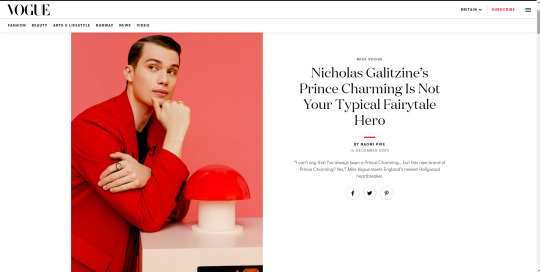
If anything is going to get you in the Christmas spirit, it’s English actor Nicholas Galitzine’s latest look. In his newest starring role, the 26-year-old wears a dashing Feng Chen Wang red suit, with any echoes of Old Saint Nick negated by the slick fit and even slicker hairdo.
He wore the tailoring to join an all-star cast including model and British Vogue cover star Adut Akech, The Morning Show actor Bel Powley and designer Michael Halpern in a new tongue-in-cheek film for Mercedes-Benz. The stars appear as contestants in a retro take on a gameshow hosted by Adut, Supermodel Fashion Statement, in the hope of winning a Mercedes G-Class. Nicholas plays a heightened version of himself in the “OTT” production, which was “super fun” to film, he told Miss Vogue over the phone.
“The red suit really just kind of popped along with the other extremely bold outfits we wore as a cast,” he said. “I’m very much an easy person, and I love to work with people who have bold eccentric vision. As a performer, I love to facilitate that in whatever way.”
Nicholas’s performing career wasn’t part of any grand plan – he says he was more at home on the rugby pitch than the stage while at school. But a trip to the Edinburgh Fringe saw him return to South West London with a flurry of agents eager to have him on their books. “I was always a pretty shy kid. At that point in my life, [being in a play] felt like a big step that I needed to take, but I wasn’t expecting anything to come of it,” he said. “There, this idea was presented to me of potentially becoming an actor, which was kind of crazy. I left school unsure of what I wanted to do in life. It was kind of by fate that it came at this perfect moment, and I haven’t really looked back since. I don’t think anyone who I went to school with would have necessarily have been like, ‘Oh, he’s going to be an actor one day.’ I am just as surprised as anyone else.”
Seven years have since passed, and Nicholas has had roles in Netflix’s Chambers and as a closeted teen in the Irish film Handsome Devil, and played Timmy Andrews in The Craft: Legacy, released earlier this year. But it’s his role as Prince Charming in the forthcoming live action retelling of Cinderella – due for release early in 2021 – that is sure to catapult him fully into the spotlight.
For Prince Charming, Nicholas drew on his own personality and experience to bring a modern, more human element to the role. “I definitely had a sort of rebellious period as a kid and was alway getting into trouble and was very mischievous,” he chuckled down the phone. “Yet I’ve always aspired to be the quintessential gentleman. This version of Prince Charming is very much a fusion of both those things. He’s not your typical clean-cut, linear fairytale prince, there’s definitely an edge to him and there are things about him that make him more human than your typical fairytale prince.”
The release of Cinderella couldn’t be more timely, he hopes. After the last 12 months, a happily ever after might be just what everyone needs. “People will be drawn in by the familiarity of it, but then ultimately surprised by our interpretation of it, which is kind of the best of both worlds,” Nicholas said. “I think you always feel a certain level of nervousness when you’re taking on a character that is so well known and so iconic. I felt very comfortable in the fact that we were making something bold and new, and with the team that was assembled around me, I was just so supported going through the process.”
Fans of the original Disney classic will be pleased to hear that this Cinderella is packed with musical numbers. “I just had such an incredible amount of fun doing it, being in a movie musical is one of the greatest creative gifts you can possibly imagine,” said the actor. “It was definitely intimidating in the beginning, but as soon as we finished I was so sad it was over.” Of his co-star, Camila Cabello, who plays the titular role, Nicholas said: “I can tell you for a fact that I have never felt as untalented as when I had to sing alongside her and the other incredible singers, like Idina Menzel (Cinderella’s evil stepmother), and Billy Porter (who plays a genderless Fairy Godmother). I just feel so blessed to be on these tracks with these incredible singers, and regardless of what happens in life, no one can take that away from me now.”
The Cinderella soundtrack won’t be the only album Nicholas appears on next year. “I’m going to be releasing some of my own music in the new year, which is super exciting because I’ve never really had time to pursue that, as acting has taken precedence,” he said. “My goal is to continue working with passionate, driven, artists who are willing to think out of the box, and to keep challenging myself as an artist and a creative.”
Fashion is something else that Nicholas is keen to get his teeth into. Having donned “Cuban heels and super-tight trousers” to play Prince Charming, he’s been picking up style notes from set. “I think you have to step outside of your aesthetic comfort zone when you’re creating characters, because for me, a lot of characterisation happens in costume building,” he explained. “I’ve been very lucky to play a plethora of different characters, and have had to experiment with a lot of styles that aren’t typically what I wear and have been influenced through that.”
He said he admires the wardrobe of Harry Styles, who famously takes a fluid approach to getting dressed. “Something that I’ve definitely taken on when I think of my style icons – people like Harry Styles and the way he’s managed to bring a femininity to his masculinity – is that that’s definitely the way that we’re moving as men going into 2021.” Nicholas name drops young designers Daniel W. Fletcher and Harris Reed as creatives he would like to work with in the near future, and adds that he’s long admired the work of Kim Jones and yearns to own a Tom Ford Suit.
Though classically handsome, Nicholas admits that he hasn’t always felt accepted by the fashion and film worlds. As a broad-shouldered former rugby player, Nicholas said some fashion brands simply don’t cater to his shape, but added that things are changing. “I still have thick thighs, but the male aesthetic is very much tailored to the Timothée Chalamets and the Charlie Plummers of this world,” he said. “I think that we’re moving back into this space of normalising different body types, for both men and women. I think there has been a beauty standard in fashion and the movie industry, but all the shapes are great shapes as far as I’m concerned. If people don’t want my thick thighs then that’s just that’s their fault.”
BY NAOMI PIKE (16 DECEMBER 2020) BRITISH VOGUE
12 notes
·
View notes
Text
My 2020 Oscar Ballot (for Gambling Purposes Only)
There are some great and terrible films being honored this year, but that doesn’t mean YOU can’t make some $MONEY$
If you like to gamble on 5-hour award shows, here are my picks that may help you on your way to winning.
BEST ANIMATED SHORT

Dcera (Daughter) Hair Love ✅ Kitbull Memorable Sister
BEST DOCUMENTARY SHORT
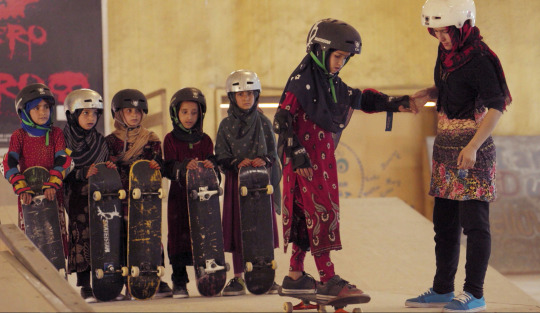
In the Abscence Learning to Skateboard in a Warzone (If You’re a Girl) ✅ Life Overtakes Me St. Louis Superman Walk Run Cha-Cha
BEST LIVE ACTION SHORT

Brotherhood ✅ Nefta Football Club The Neighbors’ Window Saria A Sister
BEST SOUND EDITING

1917 ✅ Ford v Ferrari <----Potential Upset Joker Once upon a Time... in Hollywood Star Wars: The Rise of Skywalker
BEST SOUND MIXING

1917 ✅ Ad Astra Ford v Ferrari <----Potential Upset Joker Once upon a Time... in Hollywood
BEST MAKEUP & HAIRSTYLING

1917 Bombshell ✅ Joker Judy Maleficent: Mistress of Evil
BEST VISUAL EFFECTS
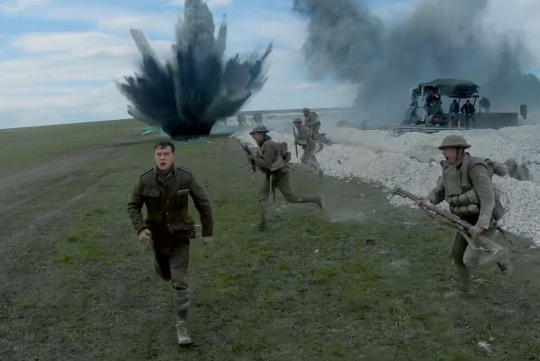
1917 ✅ Avengers: Endgame <----Potential Upset The Irishman The Lion King Star Wars: The Rise of Skywalker
BEST ORIGINAL SONG

“I Can’t Let You Throw Yourself Away,” Toy Story 4, Randy Newman “(I’m Gonna) Love Me Again,” Rocketman, Elton John & Bernie Taupin ✅ “I’m Standing With You,” Breakthrough, Diane Warren “Into The Unknown,” Frozen II, Kristen Anderson-Lopez and Robert Lopez “Stand Up,” Harriet, Brian Campbell and Cynthia Erivo
BEST ORIGINAL SCORE

1917, Thomas Newman <----Potential Upset Joker, Hildur Guðnadóttir ✅ Little Women, Alexandre Desplat Marriage Story, Randy Newman Star Wars: The Rise of Skywalker, John Williams
BEST COSTUME DESIGN

The Irishman, Sandy Powell and Christopher Peterson Jojo Rabbit, Mayes C. Rubeo Joker, Mark Bridges Little Women, Jacqueline Durran Once Upon a Time... in Hollywood, Arianne Phillips
BEST PRODUCTION DESIGN
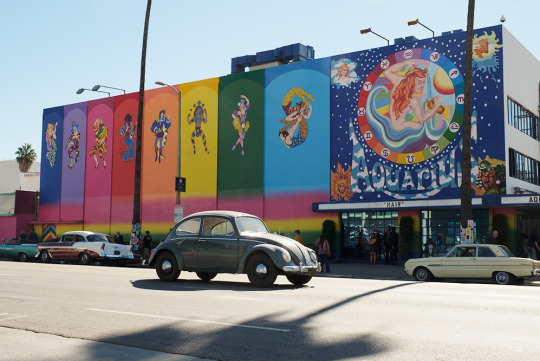
1917 <----Potential Upset The Irishman Jojo Rabbit Once Upon a Time... in Hollywood ✅ Parasite
BEST FILM EDITING
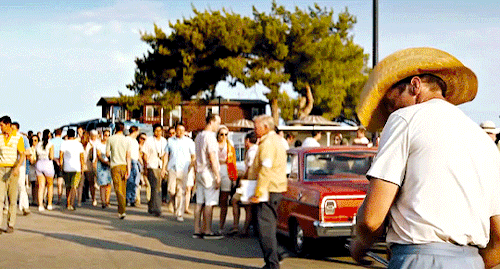
Ford v Ferrari, Andrew Buckland and Michael McCusker ✅ The Irishman, Thelma Schoonmaker Jojo Rabbit, Tom Eagles Joker, Jeff Groth Parasite, Yang Jin-mo <----Potential Upset
BEST CINEMATOGRAPHY

1917, Roger Deakins ✅ The Irishman, Rodrigo Prieto Joker, Lawrence Sher The Lighthouse, Jarin Blaschke Once Upon a Time... in Hollywood, Robert Richardson
BEST DOCUMENTARY FEATURE

American Factory ✅ The Cave The Edge of Democracy For Sama <----Potential Upset Honeyland
BEST INTERNATIONAL FEATURE
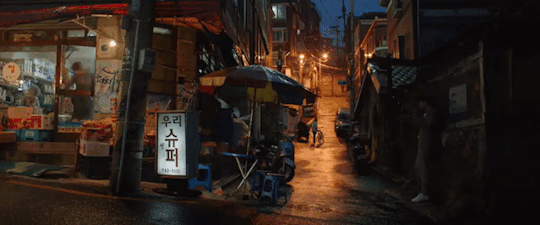
Boże Ciało (Corpus Christi), Poland Медена земја (Honeyland), Macedonia Les Miséables (The Miserable Ones), France Dolor y gloria (Pain and Glory), Spain 기생충 (Parasite), South Korea ✅
BEST ANIMATED FEATURE

How to Train Your Dragon: The Hidden World I Lost My Body Klaus <----Potential Upset Missing Link Toy Story 4 ✅
BEST ADAPTED SCREENPLAY

The Irishman, Steven Zaillian Jojo Rabbit, Taika Waititi ✅ Joker, Todd Phillips and Scott Silver Little Women, Greta Gerwig <----Potential Upset The Two Popes, Anthony McCarten
BEST ORIGINAL SCREENPLAY

1917, Sam Mendes and Krysty Wilson-Cairns Knives Out, Rian Johnson Marriage Story, Noah Baumbach Once Upon a Time... in Hollywood, Quentin Tarantino <----Potential Upset Parasite, Bong Joon-ho and Han Jin-won ✅
BEST SUPPORTING ACTRESS
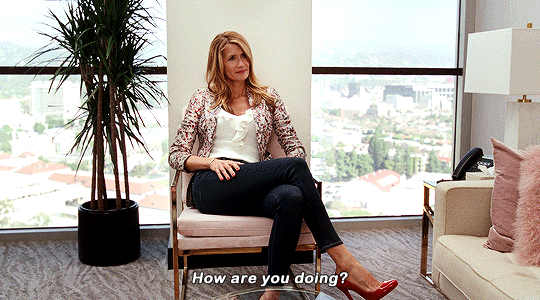
Kathy Bates, Richard Jewell Laura Dern, Marriage Story ✅ Scarlett Johansson, Jojo Rabbit Florence Pugh, Little Women Margot Robbie, Bombshell
BEST SUPPORTING ACTOR
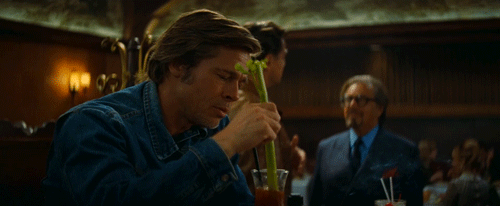
Tom Hanks, A Beautiful Day in the Neighborhood Anthony Hopkins, The Two Popes Al Pacino, The Irishman Joe Pesci, The Irishman Brad Pitt, Once Upon a Time... in Hollywood ✅
BEST LEAD ACTRESS

Cynthia Erivo, Harriett Scarlett Johansson, Marriage Story <----Potential Upset Saoirse Ronan, Little Women Charlize Theron, Bombshell Renee Zellweger, Judy ✅
BEST LEAD ACTOR

Antonio Banderas, Pain and Glory Leonardo DiCaprio, Once Upon a Time...in Hollywood Adam Driver, Marriage Story Joaquin Phoenix, Joker ✅ Jonathan Pryce, The Two Popes
BEST DIRECTOR
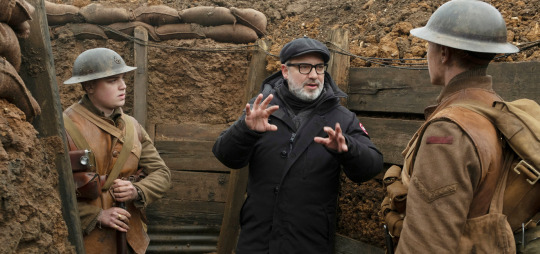
1917, Sam Mendes ✅ The Irishman, Martin Scorsese Joker, Todd Phillips Once Upon a Time... in Hollywood, Quentin Tarantino Parasite, Bong Joon Ho <----Potential Upset
BEST PICTURE
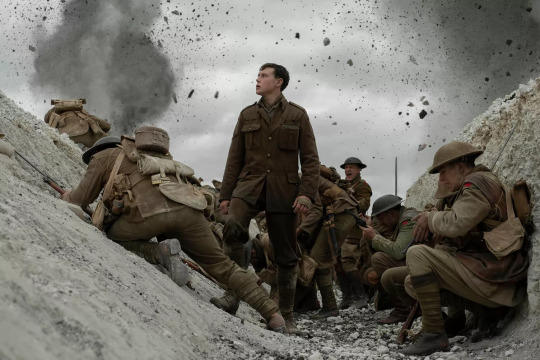
1917 ✅ Ford v Ferrari The Irishman Jojo Rabbit Joker Little Women Marriage Story Once Upon a Time... in Hollywood Parasite <----Potential Upset
#movie#movies#Oscars#oscars 2020#best picture#best director#best actor#best actress#Academy Awards#parasite#once upon a time in hollywood#marriage story#little women#joker#jojo rabbit#the irishman#ford v ferrari#1917#Sam Mendes#Martin Scorsese#adam driver#Scarlett Johansson#brad pitt#laura dern#rene zellweger#Robert De Niro#leonardo dicaprio#al pacino
17 notes
·
View notes
Text
2020 Mitsubishi Outlander Sport
After 3 days in a nice but troubled Volvo XC60, the nice folks at Avis swapped it out for an “Outlander.” I thought, “Cool. A ‘GT’ might almost be an even trade!“
What they meant though, was an Outlander “Sport.“
In Four Words: It Gets No Respect
Where I saw one: In Rochester, and Kalamazoo, and Ann Arbor, and Pinckney. And Hell, for about 5 minutes.
Nostalgia/Coolness Factor: 1/10
Baseline: 0, because I never actually owned one.. -10 because I had never driven a Mitsubishi anything ever in my life. -5 because I had no idea an Outlander Sport existed, or that it was genetically unrelated to the Outlander regular size. Think Ford EcoSport instead of an Edge. -10 because style-wise, they came from the same aggressively determined not to look like everything else on the road while basically looking like everything else on the road design studio. The face - grill, lights, bumper - says nothing coherent. It makes less sense than Torny Starks goatee. Or this beard thing.
I do apologize. Moving on…
-5 for being cheap and tinny. +10 for being more right-sized than the Volvo. +21 because as bored as I was with this car, I can’t come up with more to say to get to the end number.
1 note
·
View note
Text
Oscars 2020 : Choix et prédictions
La 92e cérémonie des Oscars, sans animateur encore une fois cette année, aura lieu ce dimanche 9 février. Comme le veut la tradition, voici mes choix et mes prédictions dans chacune des catégories principales.
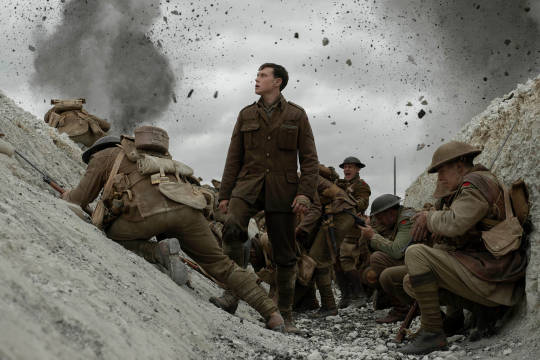
MEILLEUR FILM Ford v Ferrari The Irishman Jojo Rabbit Joker Little Women Marriage Story 1917 Once Upon a Time… in Hollywood Parasite
Choix : Once Upon a Time… in Hollywood, non seulement mon film préféré de 2019, mais aussi mon film préféré de la décennie.
Prédiction : Plusieurs candidats sérieux cette année, dont Joker (le film avec le plus de nominations) et Parasite (la Palme d’or, le chouchou des critiques, le lauréat du SAG Award de la meilleure distribution d’ensemble), ainsi que le chef-d’œuvre de Tarantino. Mais parce que les Oscars récompensent rarement les meilleurs films, j’ai l’impression qu’ils ne pourront pas résister au techniquement impressionnant, mais sans plus 1917. Il a déjà le Golden Globe du meilleur drame, le prix de la PGA et tout plein de BAFTAs en poche.
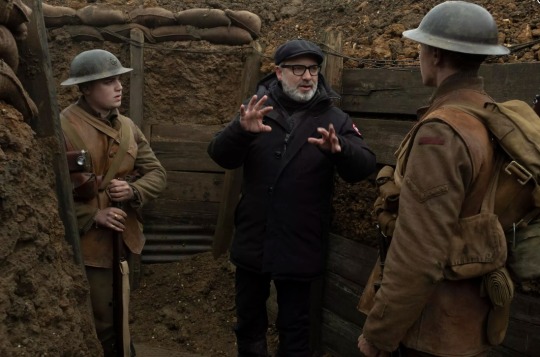
MEILLEURE RÉALISATION
Quentin Tarantino, Once Upon a Time… in Hollywood Martin Scorsese, The Irishman Bong Joon-ho, Parasite Todd Phillips, Joker Sam Mendes, 1917
Choix : Tarantino, bien sûr. Ce cinéaste a littéralement changé ma vie il y a 25 ans, et il signe ici son meilleur film en carrière.
Prédiction : Encore là, l’Academy risque de donner un 2e Oscar comme réalisateur à Sam Mendes (lauréat du prix de la DGA), alors que Tarantino n’en a jamais gagné aucun.
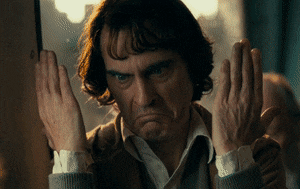
MEILLEUR ACTEUR
Antonio Banderas, Pain and Glory Leonardo DiCaprio, Once Upon a Time… in Hollywood Adam Driver, Marriage Story Joaquin Phoenix, Joker Jonathan Pryce, The Two Popes
Choix et prédiction : Joaquin Phoenix est probablement le meilleur acteur de sa génération, et avec The Master et You Were Never Really Here, sa performance dans Joker forme une troublante trilogie.
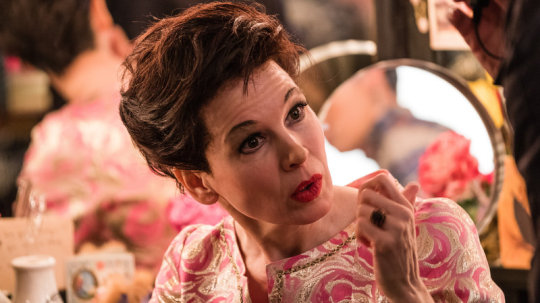
MEILLEURE ACTRICE
Cynthia Erivo, Harriet Scarlett Johansson, Marriage Story Saoirse Ronan, Little Women Charlize Theron, Bombshell Renee Zellweger, Judy
Choix : Scarlett Johansson, criante de vérité dans Marriage Story.
Prédiction : Renee Zellwegger dans Judy. C’est toujours payant d’incarner une personnalité réelle.
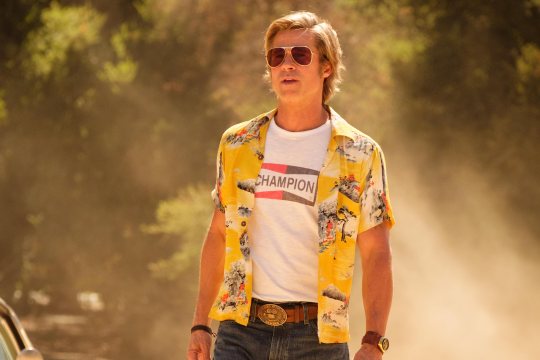
MEILLEUR ACTEUR DE SOUTIEN
Tom Hanks, A Beautiful Day in the Neighborhood Anthony Hopkins, The Two Popes Al Pacino, The Irishman Joe Pesci, The Irishman Brad Pitt, Once Upon a Time… in Hollywood
Choix et prédiction : Brad Pitt, Movie Star avec des majuscules, incroyablement charismatique dans le film de Tarantino.
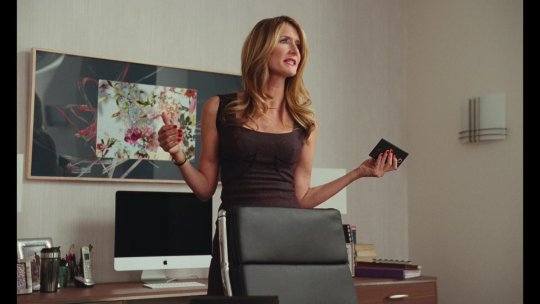
MEILLEURE ACTRICE DE SOUTIEN
Kathy Bates, Richard Jewell Laura Dern, Marriage Story Scarlett Johannson, Jojo Rabbit Florence Pugh, Little Women Margot Robbie, Bombshell
Choix et prédiction : Qui n’adore pas Laura Dern? Et ce sera peut-être la seule façon de récompenser cet excellent film qu’est Marriage Story.

MEILLEUR SCÉNARIO ORIGINAL
Knives Out, Rian Johnson Marriage Story, Noah Baumbach 1917, Sam Mendes and Krysty Wilson-Cairns Once Upon a Time… in Hollywood, Quentin Tarantino Parasite, Bong Joon-ho, Jin Won Han
Choix et prédiction : Vu qu’on dirait que Tarantino va une fois de plus être écarté des catégories Meilleur film et Meilleure réalisation, il devra se contenter d’un 3e Oscar du Meilleur scénario. À moins que Parasite l’emporte, ce qui est quand même très probable.
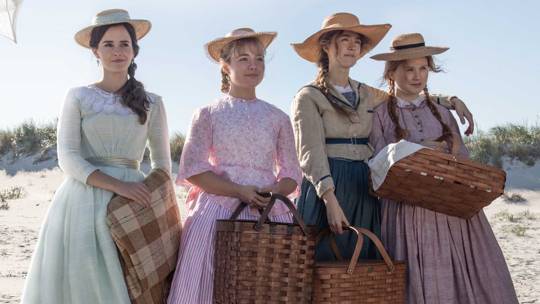
MEILLEURE ADAPTATION
The Irishman, Steven Zaillian Jojo Rabbit, Taika Waititi Joker, Todd Phillips, Scott Silver Little Women, Greta Gerwig The Two Popes, Anthony McCarten
Choix : Le scénario de The Irishman est magistral, à tous les niveaux. Ce film sera-t-il le grand oublié de la cérémonie?
Prédiction : J’ai l’impression que l’Academy ressentira la pression de remettre au moins un prix à Little Women, et ce sera probablement celui-ci. Mais c’est aussi possible que le ridiculement surestimé Jojo Rabbit gagne ce prix.
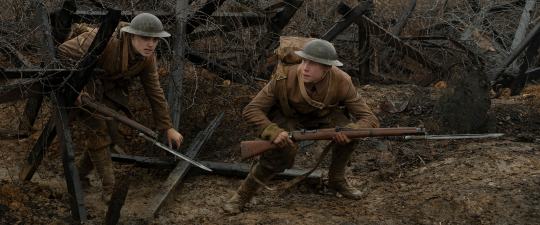
MEILLEURE DIRECTION PHOTO
The Irishman, Rodrigo Prieto Joker, Lawrence Sher The Lighthouse, Jarin Blaschke 1917, Roger Deakins Once Upon a Time… in Hollywood, Robert Richardson Choix : Once Upon a Time… in Hollywood, un plaisir visuel de tous les instants.
Prédiction : 1917 pour le gros flex de Roger Deakins, comme dirait mon ami Yannick. Gagnant du prix de l’ASC.
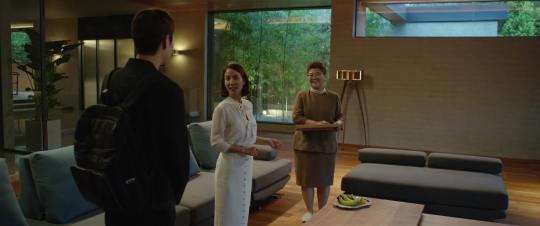
MEILLEUR MONTAGE
Ford v Ferrari, Michael McCusker, Andrew Buckland The Irishman, Thelma Schoonmaker Jojo Rabbit, Tom Eagles Joker, Jeff Groth Parasite, Jinmo Yang
Choix : The Irishman, car Thelma Schoonmaker parvient à rendre un film de 3 h 30 toujours captivant, sans longueurs.
Prédiction : Parasite, car il a gagné le prix ACE Eddie.

MEILLEUR MONTAGE SONORE
Ford v Ferrari, Don Sylvester Joker, Alan Robert Murray 1917, Oliver Tarney, Rachel Tate Once Upon a Time… in Hollywood, Wylie Stateman Star Wars: The Rise of SkyWalker, Matthew Wood, David Acord
Choix : Ce ne sont pas des catégories que je connais bien, mais j’ai adoré le son des moteurs dans Ford v Ferrari.
Prédiction : 1917, car j’ai l’impression que ce sera le grand gagnant de la soirée, tour de force technique et tout ça.
MEILLEUR MIX SONORE Ad Astra Ford v Ferrari Joker 1917 Once Upon a Time… in Hollywood Choix : Ford v Ferrari. Prédiction : 1917.
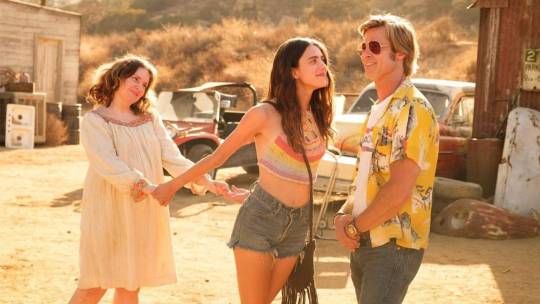
MEILLEURE DIRECTION ARTISTIQUE
The Irishman, Bob Shaw and Regina Graves Jojo Rabbit, Ra Vincent and Nora Sopkova 1917, Dennis Gassner and Lee Sandales Once Upon a Time… in Hollywood, Barbara Ling and Nancy Haigh Parasite, Lee Ha-Jun and Cho Won Woo, Han Ga Ram, and Cho Hee
Choix et prédiction : Je vais y aller pour la reconstitution d’époque, les décors de western, Spahn Ranch dans Once Upon a Time... in Hollywood, mais 1917 pourrait rafler ce prix également. Parasite aussi serait plausible.
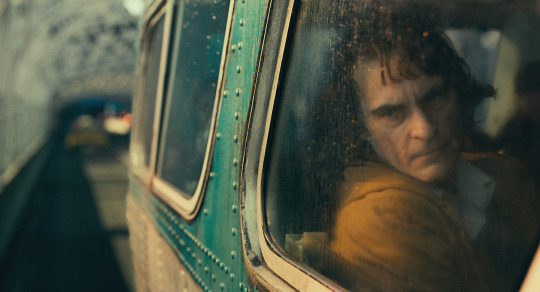
MEILLEURE MUSIQUE ORIGINALE
Joker, Hildur Guðnadóttir Little Women, Alexandre Desplat Marriage Story,Randy Newman 1917, Thomas Newman Star Wars: The Rise of Skywalker, John Williams
Choix et prédiction : Joker et le sinistre violoncelle de Hildur Guðnadóttir, qui contribue grandement à l’atmosphère du film.

MEILLEURE CHANSON ORIGINALE
I Can’t Let You Throw Yourself Away, Toy Story 4 I’m Gonna Love Me Again, Rocketman I’m Standing With You, Breakthrough Into the Unknown, Frozen 2 Stand Up, Harriet
Choix : Je n’ai pas encore vu Frozen 2, mais je suis obsédé par Into the Unknown telle que chantée par Idina Menzel.
Prédiction : Difficile de résister à remettre un prix à Elton John pour I’m Gonna Love Me Again!
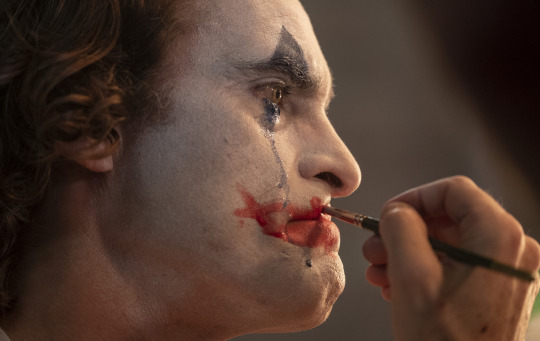
MEILLEUR MAQUILLAGE ET MEILLEURE COIFFURE
Bombshell Joker Judy Maleficent: Mistress of Evil 1917
Choix et prédiction : Joker peut-être? Ou est-ce trop facile d’associer ce film au maquillage?
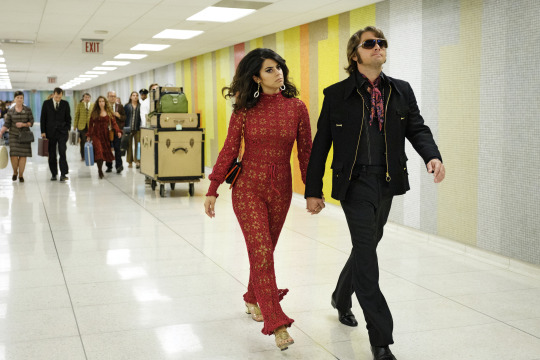
MEILLEURS COSTUMES
The Irishman, Sandy Powell, Christopher Peterson Jojo Rabbit, Mayes C. Rubeo Joker, Mark Bridges Little Women, Jacqueline Durran Once Upon a Time… in Hollywood, Arianne Phillips
Choix et prédiction : Once Upon a Time... in Hollywood, car les films d’époque sont souvent récompensés pour leurs costumes, et le travail de la designer est particulièrement inspiré dans le film de Tarantino.

MEILLEURS EFFETS VISUELS
Avengers Endgame The Irishman 1917 The Lion King Star Wars: The Rise of Skywalker
Choix : Avengers Endgame, un quasi oublié des Oscars. On sous-estime l’exploit qu’est la culmination de l’Infinity Saga, notamment au niveau des effets visuels.
Prédiction : 1917. La prédiction facile pour la majorité des catégories.
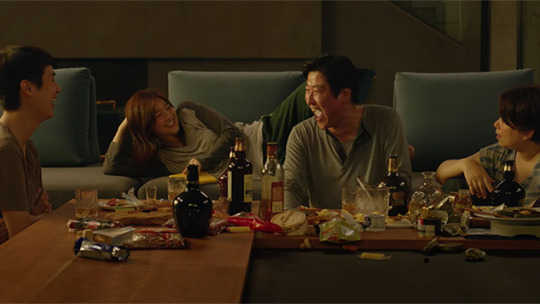
MEILLEUR FILM INTERNATIONAL
Corpus Christi, Jan Komasa Honeyland, Tamara Kotevska, Ljubo Stefanov Les Misérables, Ladj Ly Douleur et gloire, Pedro Almodovar Parasite, Bong Joon Ho
Choix et prédiction : Parasite. La catégorie la plus facile à prédire de la soirée, avec raison. Un chef-d’œuvre, tout simplement.
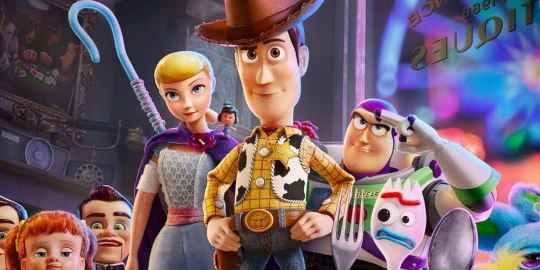
MEILLEUR FILM D’ANIMATION
How to Train Your Dragon: The Hidden World, Dean DeBlois J'ai perdu mon corps, Jeremy Clapin Klaus, Sergio Pablos Missing Link, Chris Butler Toy Story 4, Josh Cooley
Prédiction : Je n’en ai vu aucun. Je vais dire Toy Story 4. Comme ça.
MEILLEUR COURT MÉTRAGE D’ANIMATION
Dcera, Daria Kashcheeva Hair Love, Matthew A. Cherry Kitbull, Rosana Sullivan Memorable, Bruno Collet Sister, Siqi Song
Prédiction : Je n’en ai vu aucun. Je vais dire Hair Love. Comme ça.

MEILLEUR DOCUMENTAIRE
American Factory, Julia Rieichert, Steven Bognar The Cave, Feras Fayyad The Edge of Democracy, Petra Costa For Sama, Waad Al-Kateab, Edward Watts Honeyland, Tamara Kotevska, Ljubo Stefanov
Prédiction : Paraît que For Sama est exceptionnel.
MEILLEUR COURT MÉTRAGE DOCUMENTAIRE
In the Absence Learning to Skateboard in a Warzone, Carol Dysinger Life Overtakes Me, Kristine Samuelson, John Haptas St. Louis Superman Walk Run Cha-Cha, Laura Nix
Prédiction : Learning to Skateboard in a Warzone. Le titre m’intrigue.
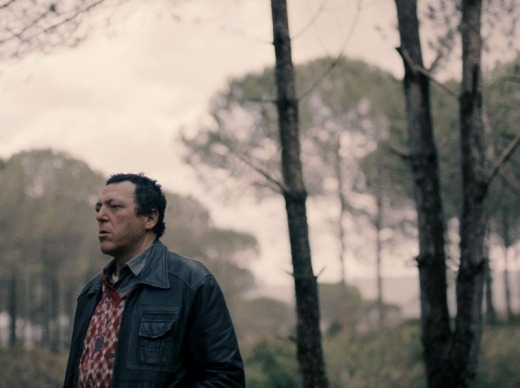
MEILLEUR COURT MÉTRAGE
Brotherhood, Meryam Joobeur Nefta Football Club, Yves Piat The Neighbors’ Window, Marshall Curry Saria, Bryan Buckley Une soeur, Delphine Girard
Choix : Une soeur, pour la twist ingénieuse, le suspense soutenu, et les excellentes actrices. Le jury dont je faisais partie lui a remis le prix du Meilleur film à SPASM.
Prédiction : Pourquoi pas la coproduction québécoise Brotherhood!
5 notes
·
View notes
Text
Oscar Nominations 2020: The Complete List
The Academy Awards will air on ABC on February 9, 2020
Best Picture:
“Ford v Ferrari”
“The Irishman”
“Jojo Rabbit”
“Joker”
“Little Women”
“Marriage Story”
“1917”
“Once Upon a Time in Hollywood”
“Parasite”
Lead Actor:
Antonio Banderas “Pain and Glory”
Leonardo DiCaprio “Once Upon a Time in Hollywood”
Adam Driver “Marriage Story”
Joaquin Phoenix “Joker”
Jonathan Pryce “The Two Popes”
Lead Actress:
Cynthia Erivo “Harriet”
Scarlett Johansson “Marriage Story”
Saoirse Ronan “Little Women”
Charlize Theron “Bombshell”
Renee Zellweger “Judy”
Supporting Actor:
Tom Hanks, “A Beautiful Day in the Neighborhood”
Anthony Hopkins, “The Two Popes”
Al Pacino, “The Irishman”
Joe Pesci, “The Irishman”
Brad Pitt, “Once Upon a Time in Hollywood”
Supporting Actress:
Kathy Bates, “Richard Jewell”
Laura Dern, “Marriage Story”
Scarlett Johannson, “Jojo Rabbit”
Florence Pugh, “Little Women”
Margot Robbie, “Bombshell”
Director:
Martin Scorsese, “The Irishman”
Todd Phillips, “Joker”
Sam Mendes, “1917”
Quentin Tarantino, “Once Upon a Time in Hollywood”
Bong Joon Ho, “Parasite”
Animated Feature:
“How to Train Your Dragon: The Hidden World” Dean DeBlois
“I Lost My Body” Jeremy Clapin
“Klaus” Sergio Pablos
“Missing Link” Chris Butler
“Toy Story 4” Josh Cooley
Animated Short:
“Dcera,” Daria Kashcheeva
“Hair Love,” Matthew A. Cherry
“Kitbull,” Rosana Sullivan
“Memorable,” Bruno Collet
“Sister,” Siqi Song
Adapted Screenplay:
“The Irishman,” Steven Zaillian
“Jojo Rabbit,” Taika Waititi
“Joker,” Todd Phillips, Scott Silver
“Just Mercy” Destin Daniel Cretton and Andrew Lanham
“Little Women,” Greta Gerwig
“The Two Popes,” Anthony McCarten
Original Screenplay:
“Knives Out,” Rian Johnson
“Marriage Story,” Noah Baumbach
“1917,” Sam Mendes and Krysty Wilson-Cairns
“Once Upon a Time in Hollywood,” Quentin Tarantino
“Parasite,” Bong Joon-ho, Jin Won Han
Cinematography:
“The Irishman,” Rodrigo Prieto
“Joker,” Lawrence Sher
“The Lighthouse,” Jarin Blaschke
“1917,” Roger Deakins
“Once Upon a Time in Hollywood,” Robert Richardson
Best Documentary Feature:
“American Factory,” Julia Rieichert, Steven Bognar
“The Cave,” Feras Fayyad
“The Edge of Democracy,” Petra Costa
“For Sama,” Waad Al-Kateab, Edward Watts
“Honeyland,” Tamara Kotevska, Ljubo Stefanov
Best Documentary Short Subject:
“In the Absence”
“Learning to Skateboard in a Warzone,” Carol Dysinger
“Life Overtakes Me,” Kristine Samuelson, John Haptas
“St. Louis Superman”
“Walk Run Cha-Cha,” Laura Nix
Best Live Action Short Film:
“Brotherhood,” Meryam Joobeur
“Nefta Football Club,” Yves Piat
“The Neighbors’ Window,” Marshall Curry
“Saria,” Bryan Buckley
“A Sister,” Delphine Girard
Best International Feature Film:
“Corpus Christi,” Jan Komasa
“Honeyland,” Tamara Kotevska, Ljubo Stefanov
“Les Miserables,” Ladj Ly
“Pain and Glory,” Pedro Almodovar
“Parasite,” Bong Joon Ho
Film Editing:
“Ford v Ferrari,” Michael McCusker, Andrew Buckland
“The Irishman,” Thelma Schoonmaker
“Jojo Rabbit,” Tom Eagles
“Joker,” Jeff Groth
“Parasite,” Jinmo Yang
Sound Editing:
“Ford v Ferrari,” Don Sylvester
“Joker,” Alan Robert Murray
“1917,” Oliver Tarney, Rachel Tate
“Once Upon a Time in Hollywood,” Wylie Stateman
“Star Wars: The Rise of SkyWalker,” Matthew Wood, David Acord
Sound Mixing:
“Ad Astra”
“Ford v Ferrari”
“Joker”
“1917”
“Once Upon a Time in Hollywood”
Production Design:
“The Irishman,” Bob Shaw and Regina Graves
“Jojo Rabbit,” Ra Vincent and Nora Sopkova
“1917,” Dennis Gassner and Lee Sandales
“Once Upon a Time in Hollywood,” Barbara Ling and Nancy Haigh
“Parasite,” Lee Ha-Jun and Cho Won Woo, Han Ga Ram, and Cho Hee
Original Score:
“Joker,” Hildur Guðnadóttir
“Little Women,” Alexandre Desplat
“Marriage Story,”Randy Newman
“1917,” Thomas Newman
“Star Wars: The Rise of Skywalker,” John Williams*“The King,” Nicholas Britell
Original Song:
“I Can’t Let You Throw Yourself Away,” “Toy Story 4”
“I’m Gonna Love Me Again,” “Rocketman”
“I’m Standing With You,” “Breakthrough”
“Into the Unknown,” “Frozen 2”
“Stand Up,” “Harriet”
Makeup and Hair:
“Bombshell”
“Joker”
“Judy”
“Maleficent: Mistress of Evil”
“1917”
Costume Design:
”The Irishman,” Sandy Powell, Christopher Peterson
“Jojo Rabbit,” Mayes C. Rubeo
“Joker,” Mark Bridges
“Little Women,” Jacqueline Durran
“Once Upon a Time in Hollywood,” Arianne Phillips
Visual Effects:
“Avengers Endgame”
“The Irishman”
“1917”
“The Lion King”
“Star Wars: The Rise of Skywalker”
6 notes
·
View notes
Text
Oscars 2020 Predictions
Another year where in some categories there can be only one winner, but in some other everything can happen. Hoping also for some surprises.
Best Picture

Will Win: 1917
Should win:
By Heart: Joker
By Mind: Once Upon A Time...In Hollywood
Directing

Will Win: Sam Mendes for 1917
Should Win: Sam Mendes for 1917 or Bong Joon Ho for Parasite
Leading Actor

Will Win: Joaquin Phoenix
Should Win: Joaquin Phoenix
Leading Actress

Will Win: Renée Zellweger
Should Win: Scarlett Johansson
Supporting Actor

Will Win: Brad Pitt
Should Win: Brad Pitt
Supporting Actress

Will Win: Laura Dern
Should be here and Win: Jennifer Lopez
Animated Feature Film

Will Win: Klaus
Should Win: Klaus or I Lost My Body
Original Screenplay

Will Win: Parasite
Should Win: Parasite
Adapted Screenplay

Will Win: Jojo Rabbit
Should Win: Jojo Rabbit
Cinematography

Will Win: 1917
Should Win: 1917
Film Editing

Will Win: Parasite
Should Win: Ford V Ferrari
Production Design

Will Win: Once Upon A Time...In Hollywood
Should Win: Once Upon A Time...In Hollywood
Costume Design

Will Win: Jojo Rabbit
Should Win: Once Upon A Time...In Hollywood or Jojo Rabbit
Makeup and Hairstyling

Will Win: Bombshell
Should Win: Joker
Visual Effects

Will Win: 1917
Should Win: 1917
Original Score

Will Win: Joker
Should Win: Joker
Original Song

Will Win: “(I’m Gonna) Love Me Again” from Rocketman
Should Win: “Stand Up” from Harriet
Sound Mixing

Will Win: Ford V Ferrari
Should Win: Ford V Ferrari
Sound Editing

Will Win: 1917
Should Win: Ford V Ferrari or 1917
International Feature Film

Will Win: Parasite
Should Win: Parasite
Documentary Feature

Will Win: American Factory
Should Win: For Sama or The Edge of Democracy
Documentary Short Subject

Will Win: Learning to Skateboard in a Warzone (If You’re a Girl)
Live Action Short Subject

Will Win: Brotherhood
Animated Short Film

Will Win: Hair Love
3 notes
·
View notes
Photo

Min tippning inför 2020 års Oscarsgala. Titlar/namn markerade med ✔ och fetstil är de jag tror kommer vinna i respektive kategori, följt av de jag tycker borde vinna och de som borde ha varit nominerade.
Best Picture Ford v Ferrari ✔ 1917 The Irishman Joker Jojo Rabbit Little Women Marriage Story Once Upon a Time in Hollywood Parasite Borde vinna bland de nominerade: Once Upon a Time in Hollywood Borde ha nominerats: Uncut Gems
Best Director Quentin Tarantino – Once Upon a Time in Hollywood Martin Scorsese – The Irishman Sam Mendes – 1917 ✔ Bong Joon-ho – Parasite Todd Phillips – Joker Borde vinna bland de nominerade: Bong Joon-ho Borde ha nominerats: Greta Gerwig – Little Women
Best Actor ✔ Joaquin Phoenix – Joker Leonardo DiCaprio – Once Upon a Time in Hollywood Adam Driver – Marriage Story Antonio Banderas – Pain and Glory Jonathan Pryce – The Two Popes Borde vinna bland de nominerade: Antonio Banderas – Pain and Glory Borde ha nominerats: Adam Sandler – Uncut Gems
Best Actress ✔ Renee Zellweger – Judy Scarlett Johansson – Marriage Story Cynthia Erivo – Harriet Charlize Theron – Bombshell Saoirse Ronan – Little Women Borde vinna bland de nominerade: Saoirse Ronan – Little Women Borde ha nominerats: Elisabeth Moss – Her Smell, Florence Pugh – Midsommar
Best Supporting Actor ✔ Brad Pitt – Once Upon a Time in Hollywood Joe Pesci – The Irishman Anthony Hopkins – The Two Popes Al Pacino – The Irishman Tom Hanks – A Beautiful Day in the Neighborhood Borde vinna bland de nominerade: Brad Pitt – Once Upon a Time in Hollywood Borde ha nominerats: Willem Dafoe – The Lighthouse
Best Supporting Actress ✔ Laura Dern – Marriage Story Scarlett Johnasson – Jojo Rabbit Margot Robbie – Bombshell Florence Pugh – Little Women Kathy Bates – Richard Jewell Borde vinna bland de nominerade: Florence Pugh – Little Women Borde ha nominerats: Zhao Shuzhen – The Farewell
Best Original Screenplay Once Upon a Time in Hollywood – Quentin Tarantino Marriage Story – Noah Baumbach ✔ Parasite – Bong Joon-ho Knives Out – Rian Johnson 1917 – Sam Mendes & Krysty Wilson-Cairns Borde vinna bland de nominerade: Once Upon a Time in Hollywood – Quentin Tarantino Borde ha nominerats: Pain & Glory – Pedro Almodóvar
Best Adapted Screenplay The Irishman – Steven Zaillian Joker – Todd Phillips & Scott Silver ✔ Jojo Rabbit – Taika Waititi Little Women – Greta Gerwig The Two Popes – Anthony McCarten Borde vinna bland de nominerade: Little Women – Greta Gerwig
Best International Film Corpus Christi – Poland Honeyland – North Macedonia Les Miserables – France Pain and Glory – Spain ✔ Parasite – South Korea Borde vinna bland de nominerade: Parasite – South Korea Borde ha nominerats: Portrait of a Lady on Fire – France
Best Documentary Feature ✔ American Factory The Cave The Edge of Democracy For Sama Honeyland Borde ha nominerats: Apollo 11
Best Documentary – Short Subject In the Absence ✔ Learning to Skateboard in a Warzone (If You’re a Girl) Life Overtakes Me St. Louis Superman Walk Run Cha-Cha
Best Animated Feature Film How to Train Your Dragon: The Hidden World I Lost My Body Klaus Missing Link ✔ Toy Story 4 Borde vinna bland de nominerade: I Lost My Body
Best Film Editing ✔ Ford v Ferrari The Irishman Jojo Rabbit Joker Parasite Borde vinna bland de nominerade: Parasite Borde ha nominerats: Uncut Gems
Best Cinematography The Irishman Joker The Lighthouse ✔ 1917 Once Upon a Time in Hollywood Borde vinna bland de nominerade: The Lighthouse Borde ha nominerats: Little Women
Best Production Design The Irishman Jojo Rabbit 1917 ✔ Once Upon a Time in Hollywood Parasite Borde vinna bland de nominerade: Once Upon a Time in Hollywood Borde ha nominerats: Little Women
Best Costume Design The Irishman Jojo Rabbit Joker ✔ Little Women Once Upon a Time in Hollywood Borde vinna bland de nominerade: Little Women Borde ha nominerats: Pain & Glory
Best Makeup & Hairstyling ✔ Bombshell Joker Judy Maleficent: Mistress of Evil 1917 Borde vinna bland de nominerade: Bombshell Borde ha nominerats: Little Women
Best Visual Effects Avengers: Endgame The Irishman The Lion King ✔ 1917 Star Wars: The Rise of Skywalker Borde vinna bland de nominerade: The Irishman Borde ha nominerats: Ad Astra
Best Original Score ✔ Joker Little Women Marriage Story 1917 Star Wars: The Rise of Skywalker Borde vinna bland de nominerade: Little Women Borde ha nominerats: Waves
Best Original Song “I Can’t Let You Throw Yourself Away” – Toy Story 4 ✔ “(I’m Gonna) Love Me Again” – Rocketman “I’m Standing with You” – Breakthrough “Into the Unknown” – Frozen II “Stand Up” – Harriet
Best Sound Editing Ford v Ferrari Joker ✔ 1917 Once Upon a Time in Hollywood Star Wars: The Rise of Skywalker Borde vinna bland de nominerade: Ford v Ferrari Borde ha nominerats: The Lighthouse
Best Sound Mixing Ad Astra Ford v Ferrari Joker ✔ 1917 Once Upon a Time in Hollywood Borde vinna bland de nominerade: Ad Astra
Best Live-Action Short Film Brotherhood Nefta Football Club ✔ The Neighbors’ Window Saria A Sister
Best Animated Short Film Dcera (Daughter) Hair Love Kitbull ✔ Memorable Sister
2 notes
·
View notes